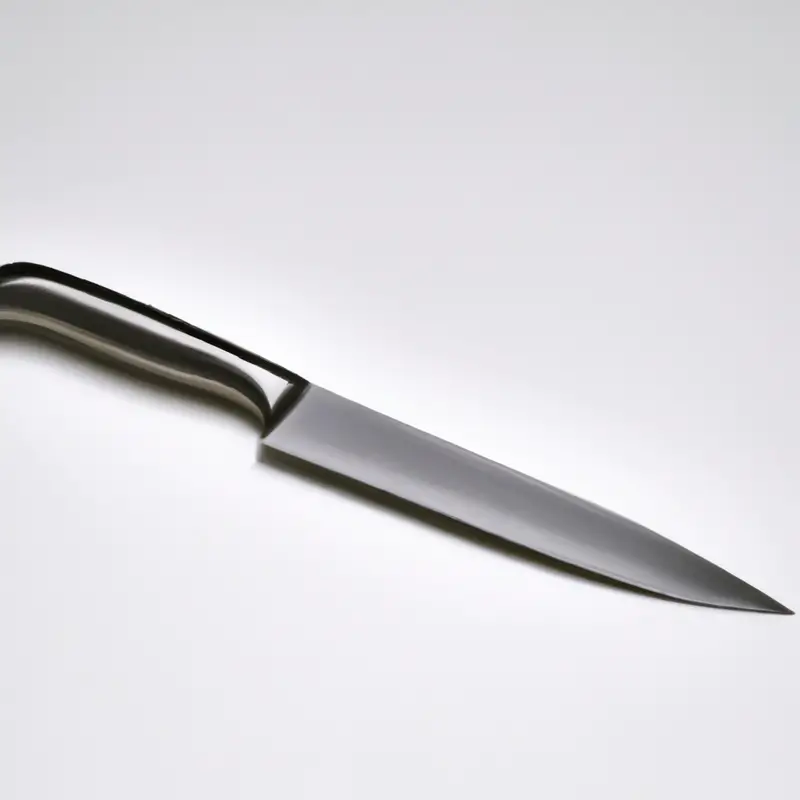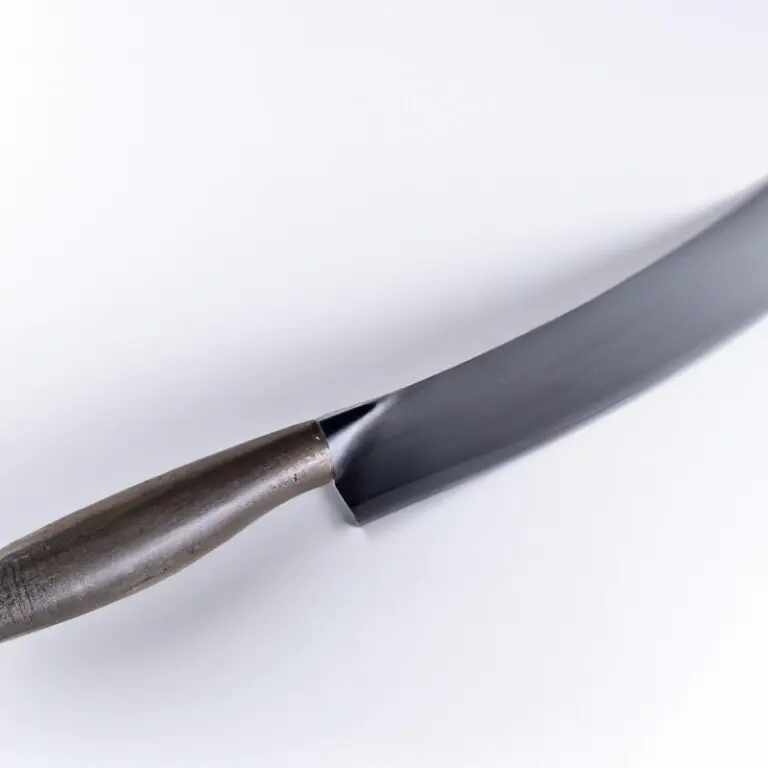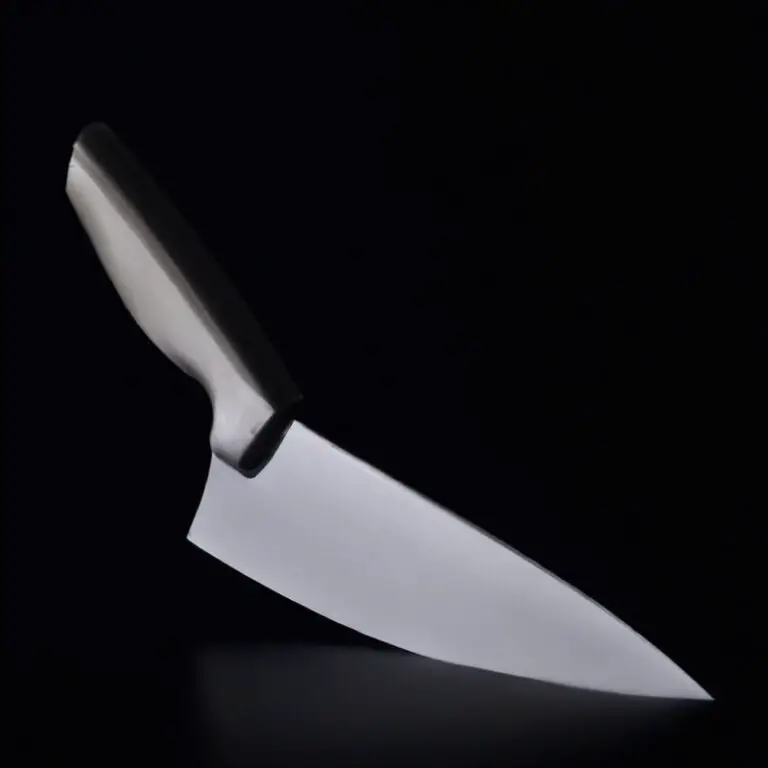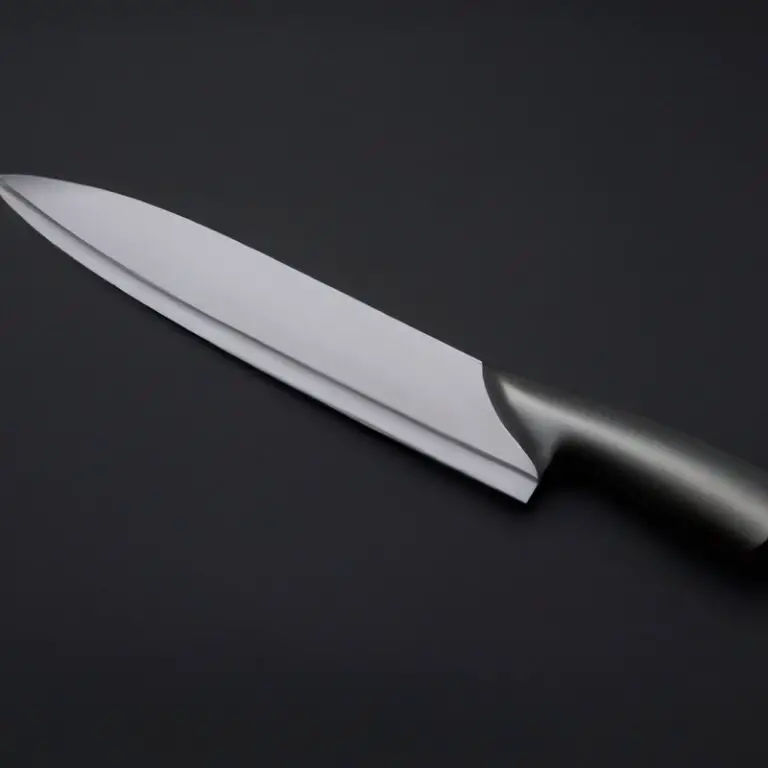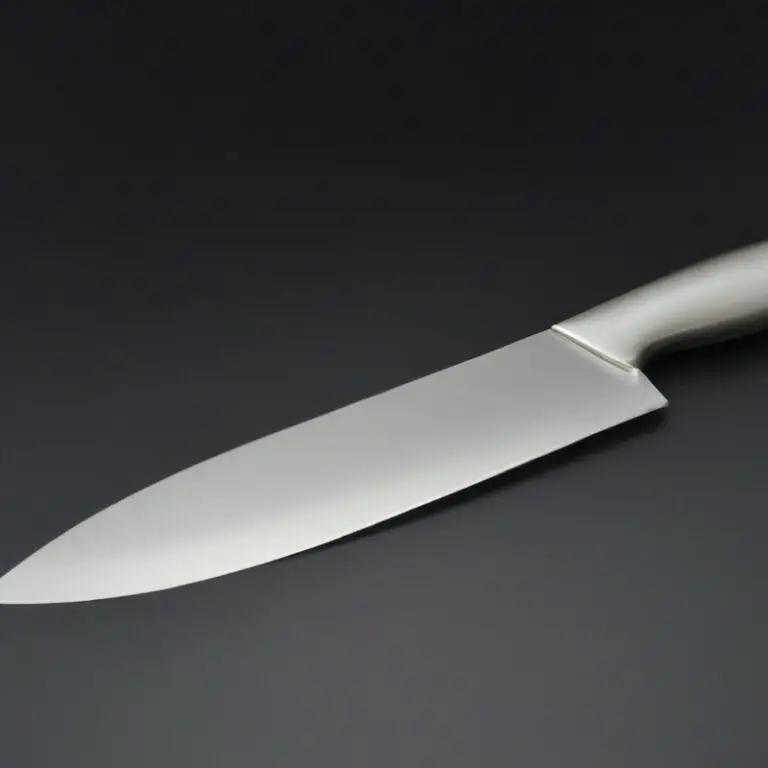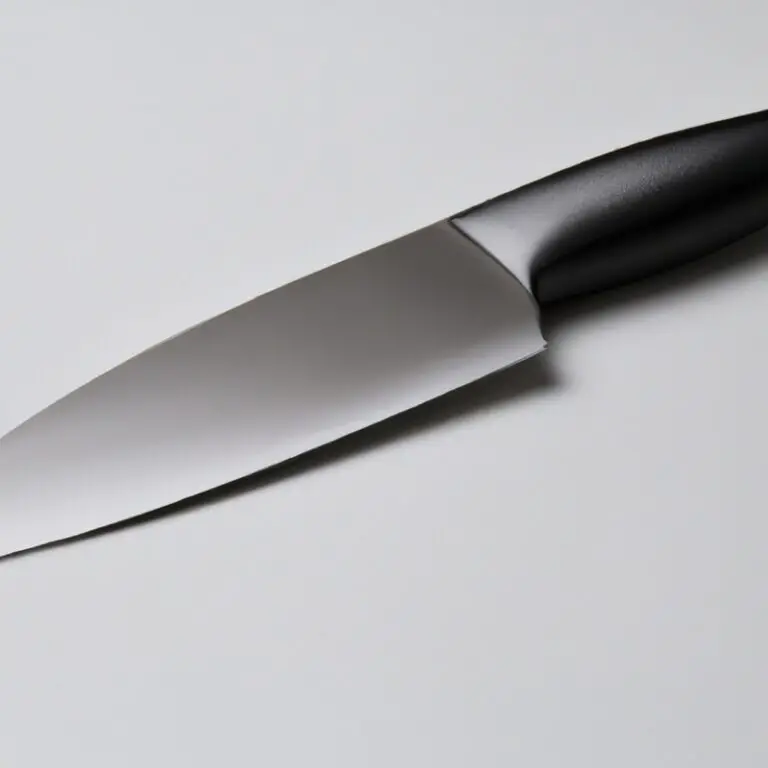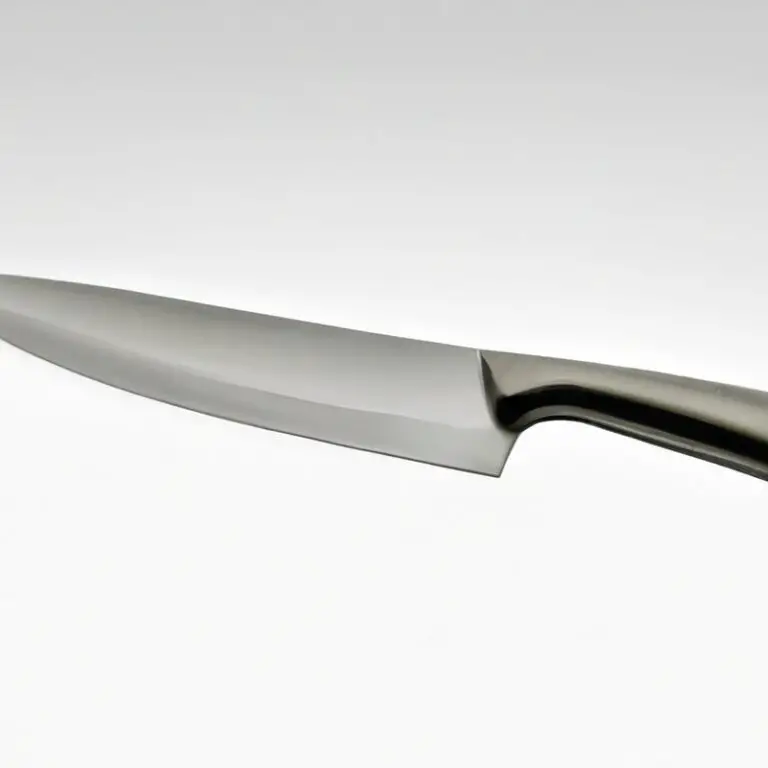Are Santoku Knives Suitable For Professional Chefs? Expert Opinion
Key Takeaways:
- Santoku knives are versatile and efficient cutting tools that can enhance a professional chef’s performance.
- Choosing the right knife ultimately depends on the chef’s preference and the type of cutting tasks they frequently need to perform.
- A high-quality Santoku knife from reputable brands is a worthwhile investment for any serious chef looking to elevate their skills and improve efficiency in the kitchen.
- While Santoku knives may not be the sole knife solution for professional chefs, they can be an excellent addition to their collection, offering a unique set of benefits and features not found in other knives.
If you’re a professional chef, you likely know that the right knife in your hand can make or break a dish. One knife that has been gaining popularity in recent years is the Santoku knife.
But is it suitable for professional chefs?
As a chef myself, I’ve had plenty of experience with different types of knives in the kitchen. In this article, we’ll take a closer look at the Santoku knife, its history, uses, and how it stacks up against other popular chef knives.
We’ll also explore the pros and cons of using a Santoku knife in a professional kitchen, and provide tips on how to choose the right one for your needs.
| Santoku Knives | Chefs’ Knives | |
|---|---|---|
| Blade Length | 5-7 inches | 8-12 inches |
| Blade Shape | Wide, straight blade with a sharp tip | Curved blade with a pointed tip |
| Weight | Lighter weight | Heavier weight |
| Functionality | Ideal for slicing, dicing, and mincing vegetables, fruits and boneless meats | Suitable for handling thicker cuts of meats and fish |
| Usability | User-friendly and easy to handle | Require more skill to operate |
| Price | Less expensive than chefs’ knives | More expensive than Santoku knives |
| Professional Use | Not ideal for heavy use in a fast-paced professional kitchen | Perfectly suitable for professional chefs due to handling heavy kitchen duties efficiently |
Understanding the Santoku Knife: Its History and Uses
The Santoku knife is a popular chef’s knife that originated in Japan. Its name translates to three virtues, which refers to its three primary uses: slicing, chopping, and dicing.
The Santoku knife has a shorter and wider blade than a traditional chef’s knife, which allows for a more efficient and precise cutting motion.
The design of the Santoku knife dates back to the early 20th century, where it was created as a multi-purpose kitchen knife. The knife was initially used by home cooks in Japan but later gained popularity in Western kitchens due to its versatility.
In a professional kitchen, the Santoku knife is suitable for a wide range of tasks, including slicing vegetables, meat, and fish.
Its unique design allows for effortless chopping and dicing, making it a favorite among chefs. The Santoku knife is an essential tool for sushi chefs due to its precision and sharpness.
The Santoku knife is not only useful in the kitchen but also has a rich and fascinating history.
Understanding the origins of this knife can give chefs a deeper appreciation for its design and functionality.
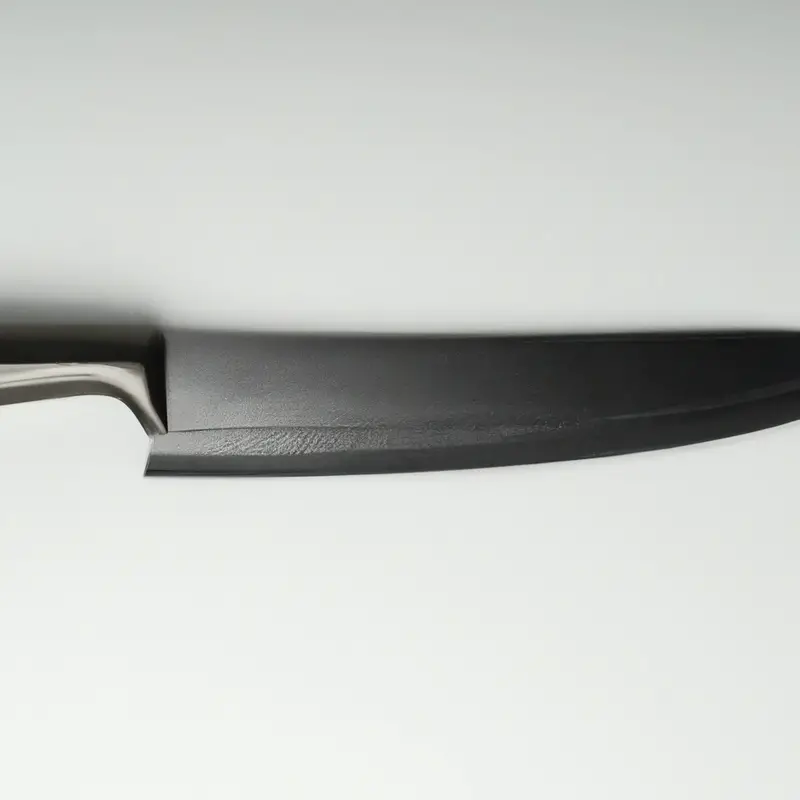
Comparing Santoku Knives to Other Popular Chef Knives
Santoku knives are becoming increasingly popular among professional chefs, but how do they compare to other popular chef knives? Compared to a chef’s knife, a Santoku knife has a shorter, wider blade and a less pronounced curve.
This design allows for a more efficient chopping motion, making it ideal for cutting vegetables and herbs.
However, the lack of a pointed tip may make it less suitable for certain tasks, such as filleting fish. On the other hand, compared to a cleaver, a Santoku knife is lighter and easier to maneuver.
It also has a more versatile blade shape, allowing for both chopping and slicing.
However, a cleaver may be better suited for heavier-duty tasks like breaking down poultry or cutting through bone. Ultimately, the right knife for a professional chef depends on their specific needs and preferences.
While Santoku knives offer unique benefits, they may not be the best choice for every task in the kitchen.
The Pros and Cons of Using Santoku Knives in a Professional Kitchen
Pros:
- Santoku knives are versatile and can handle a wide range of tasks, including slicing, dicing, and chopping.
- The flat blade makes it easier to achieve a precise cut and the thinner blade makes it easier to maneuver.
- Its lightweight design reduces hand fatigue and allows for faster work.
- Its unique shape makes it perfect for slicing vegetables, fruits, and boneless meats.
Cons:
- Santoku knives may not be suitable for heavier tasks, such as cutting through bones or frozen food.
- Its thinner blade can make it easier to chip or break if not properly maintained.
- Its flat blade can make it difficult to perform tasks that require a rocking motion, such as mincing garlic.
- It can take some time for professional chefs to get used to the shape and blade angle of the Santoku knife, which can affect their overall performance in the kitchen.
Types of Santoku Knives: Which is Best for Professional Chefs?
Santoku knives come in different types, each designed for different purposes. Blade length is a crucial factor when selecting a Santoku knife.
A blade size of 7 to 8 inches is considered versatile enough to handle various kitchen tasks.
The width of the blade is also an essential factor – a wider blade is best for chopping while a slimmer one is ideal for precise slicing. As for blade materials, those made from high-carbon stainless steel are preferable.
They stay sharp for longer, are rust-resistant, and durable.
Each Santoku knife also has a unique handle design. A comfortable handle with a good grip helps to minimize hand fatigue and increase safety.
Ultimately, the best Santoku knife for professional chefs is one that meets the specific needs of the chef and the tasks they perform in the kitchen.
How to Choose the Right Size Santoku Knife for Your Needs
Choosing the right size Santoku knife depends on your personal preferences and the tasks you need to accomplish. Santoku knives come in blade lengths ranging from 5 to 9 inches, with the most common being 7 inches.
For detailed precision work, a shorter blade is recommended.
On the other hand, a longer blade is more suitable for heavier cutting tasks. Consider the size of your hand and the grip you prefer when choosing a Santoku knife.
A comfortable and secure grip is essential to ensure optimal performance and prevent hand fatigue.
It’s also important to choose a Santoku knife with a balanced weight distribution for improved control and handling. Ultimately, the right size Santoku knife for you depends on your needs, preferences, and comfort level.
Experiment with different sizes to find a Santoku knife that works best for you.
Maintaining and Sharpening Your Santoku Knife for Optimal Performance
Maintaining and sharpening your Santoku knife is crucial for optimal performance in a professional kitchen. Here are some tips to keep your knife in top condition:
- Clean your knife after every use. Use warm water, dish soap, and a soft sponge to remove any food residue from the blade.
- Dry your knife thoroughly to prevent rust and corrosion. Use a soft cloth or paper towel to remove any excess moisture.
- Store your knife properly. Avoid keeping it in a drawer with other utensils as this could cause damage to the blade. Instead, use a knife block or magnetic strip to store it safely.
- Sharpen your knife regularly. A dull knife is dangerous and won’t perform efficiently. Use a sharpening stone or honing rod to keep the blade sharp.
- Use the correct technique when sharpening. Always follow the manufacturer’s instructions to ensure you sharpen your knife correctly.
By following these tips, you can ensure your Santoku knife remains sharp and ready for any task in a professional kitchen.
Techniques for Using Santoku Knives: Chopping, Slicing, and Dicing
Santoku knives are versatile and excel in chopping, slicing, and dicing tasks. Here are some techniques to get the most out of your Santoku knife:
- For chopping, use a rocking motion to quickly chop vegetables or herbs. Start with the tip of the knife on the cutting board and rock back and forth to slice through the food.
- When slicing, use a sweeping motion to glide the knife through the food. Be sure to maintain a consistent angle and apply even pressure for consistent slices.
- Dicing is easiest with a Santoku knife due to its wide blade. Start by slicing thin strips and then stack them horizontally before dicing into small cubes.
Remember to use a sharp Santoku knife and keep your fingers away from the blade while cutting. With practice, you can become efficient with a Santoku knife in a professional kitchen.
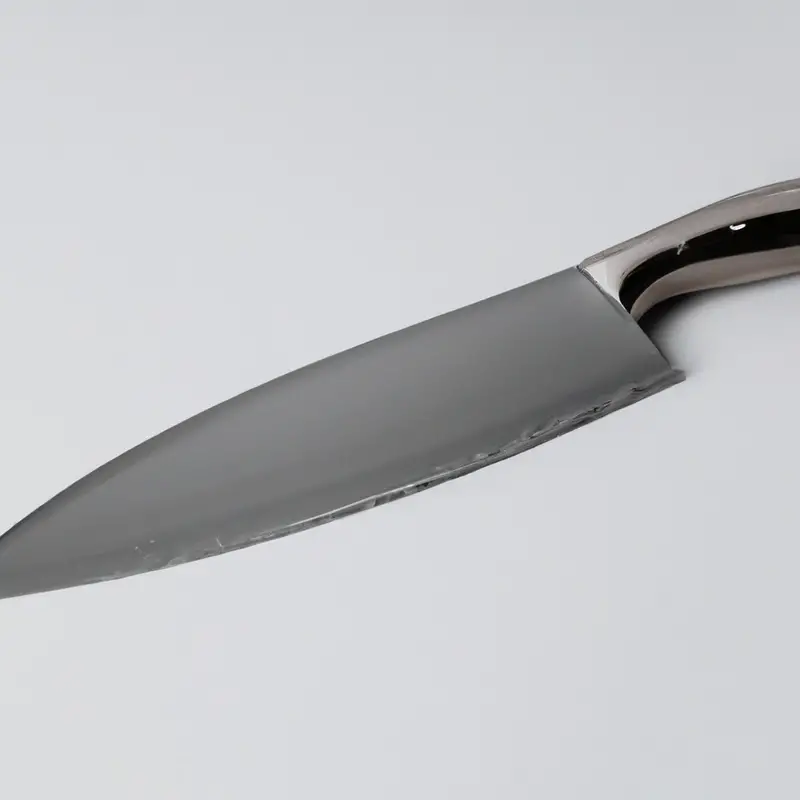
The Importance of Grip and Handle Design in Santoku Knives
The grip and handle design of Santoku knives are crucial for professional chefs. A well-designed handle ensures a comfortable grip, reducing the risk of hand fatigue or injury during prolonged use.
Additionally, a good handle offers a secure grip, improving control and precision in the kitchen.
Some handle materials prevent slippage when the blade is wet, which is particularly useful when preparing wet ingredients like fish or vegetables. In terms of design, the handle’s shape and length can affect the balance of the knife, allowing for a more effortless and natural cutting motion.
Overall, investing in a Santoku knife with a comfortable and sturdy handle is essential for any professional chef looking to create their best work in the kitchen.
Top Brands of Santoku Knives for Professional Chefs
Top Brands of Santoku Knives for Professional Chefs:
- Shun Classic 7-Inch Santoku Knife: This knife is made of VG-MAX steel with a Damascus cladding. Its handle is made of Pakkawood, providing stability and comfort.
- Global G-48 7-Inch Santoku Knife: The blade is made of CROMOVA 18 stainless steel, and the handle is made of stainless steel, giving a good grip.
- Wüsthof Classic 7-Inch Santoku Knife: The blade is made of high carbon stainless steel, and the handle is made of synthetic material designed to provide a comfortable grip.
- Miyabi Kaizen 7-Inch Santoku Knife: The blade is made of VG10 steel, providing excellent sharpness and durability. The handle is also designed for comfort and easy grip.
- Mercer Culinary Millennia 7-Inch Santoku Knife: The blade is made of Japanese steel, and the handle is made of ergonomic Santoprene and polypropylene, providing a slip-resistant grip.
Overall, the above-mentioned brands are highly rated and trusted by professional chefs around the world for their durability, sharpness, and comfortable grip.
FAQs: Common Questions About Santoku Knife Usage in the Professional Kitchen
Here are some common FAQs about Santoku knife usage in the professional kitchen:
1. What is the purpose of the Granton edge on Santoku knives?
The Granton edge, also known as the scalloped edge, is designed to create air pockets between the blade and the food being sliced or chopped. This helps to prevent food from sticking to the blade, allowing for smoother and more efficient cutting.
2. Can Santoku knives be used for all types of food?
Santoku knives are versatile and can be used for a wide range of foods, including vegetables, fruits, meats, and fish. However, they may not be the best choice for heavy-duty tasks such as cutting bone or frozen foods.
3. How should I hold and grip my Santoku knife?
It’s important to hold your Santoku knife with a firm grip, using your thumb and index finger to guide the blade. The handle should rest comfortably in your hand, and your hand should be positioned behind the blade for optimum control.
4. How do I sharpen my Santoku knife?
Santoku knives should be sharpened regularly to maintain optimal performance. You can sharpen your knife using a sharpening stone or a honing rod, depending on your preference and skill level.
5. Which size Santoku knife is best for professional chefs?
The size of your Santoku knife will depend on your individual needs and preferences. Generally, a blade length of 7 to 8 inches is recommended for most professional chefs.
By addressing these common FAQs, professional chefs can confidently incorporate Santoku knives into their kitchen toolset.
Final Verdict
In conclusion, the Santoku knife is a versatile and reliable tool that can be a valuable addition to the professional chef’s collection. It offers a unique combination of precision, speed, and comfort, making it an ideal choice for a wide range of tasks in the kitchen.
While there are some potential drawbacks to using Santoku knives, such as their limited rocking motion and smaller size, these can be mitigated by choosing the right type and size for your needs.
By following best practices for maintenance, sharpening, and grip, you can ensure that your Santoku knife performs optimally and lasts for years to come. Ultimately, the decision of whether to use Santoku knives in a professional kitchen will depend on your individual preferences and workflow.
However, given their proven track record of success and growing popularity among chefs worldwide, we believe that Santoku knives are a sound investment and an excellent choice for any professional kitchen.
Whether you are a seasoned chef or just starting out, we hope that this guide has equipped you with the knowledge and tools to make an informed decision about how to incorporate Santoku knives into your culinary repertoire. Stay sharp and happy cooking!

